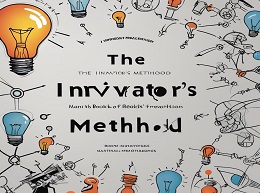Sprint

"Sprint" by Jake Knapp introduces a revolutionary methodology for solving complex problems and driving innovation in a short period of time. Developed and refined at Google Ventures, the design sprint framework has been adopted by organizations worldwide to streamline decision-making, foster creativity, and bring ideas to market faster. In this comprehensive review, we'll delve into the key concepts of "Sprint," share captivating examples, and provide insights on how to implement sprints effectively in your organization.
Understanding the Design Sprint Process:
Knapp outlines the five-day design sprint process, which involves problem definition, ideation, prototyping, and testing.
Example:
The design sprint process enabled Slack to rapidly prototype and test new features, leading to continuous improvement and user satisfaction.
Setting the Stage:
The first day of the sprint focuses on understanding the problem, defining goals, and aligning the team.
Example:
At Airbnb, the sprint team used the first day to analyze user feedback and data to identify pain points in the booking process.
Generating Ideas:
Day two of the sprint involves brainstorming and ideation to generate creative solutions to the problem.
Example:
At Uber, the sprint team used brainstorming techniques like "Crazy Eights" to generate a wide range of ideas for improving driver-partner experiences.
Making Decisions:
The third day is dedicated to making decisions and selecting the most promising ideas to prototype.
Example:
At Spotify, the sprint team used a structured decision-making framework to prioritize features for a new music discovery feature.
Prototyping:
On day four, the team builds a realistic prototype of the selected idea to test with users.
Example:
At Facebook, the sprint team used rapid prototyping tools to create a clickable prototype of a new mobile app feature for testing.
Testing and Validation:
The final day of the sprint involves testing the prototype with real users to gather feedback and validate assumptions.
Example:
At Netflix, the sprint team conducted user interviews and usability tests to validate the effectiveness of a new content recommendation algorithm.
In conclusion, "Sprint" offers a practical and systematic approach to innovation and problem-solving. By following the design sprint process outlined in the book and learning from real-world examples, organizations can accelerate their innovation efforts, reduce time to market, and deliver products and services that delight customers.













